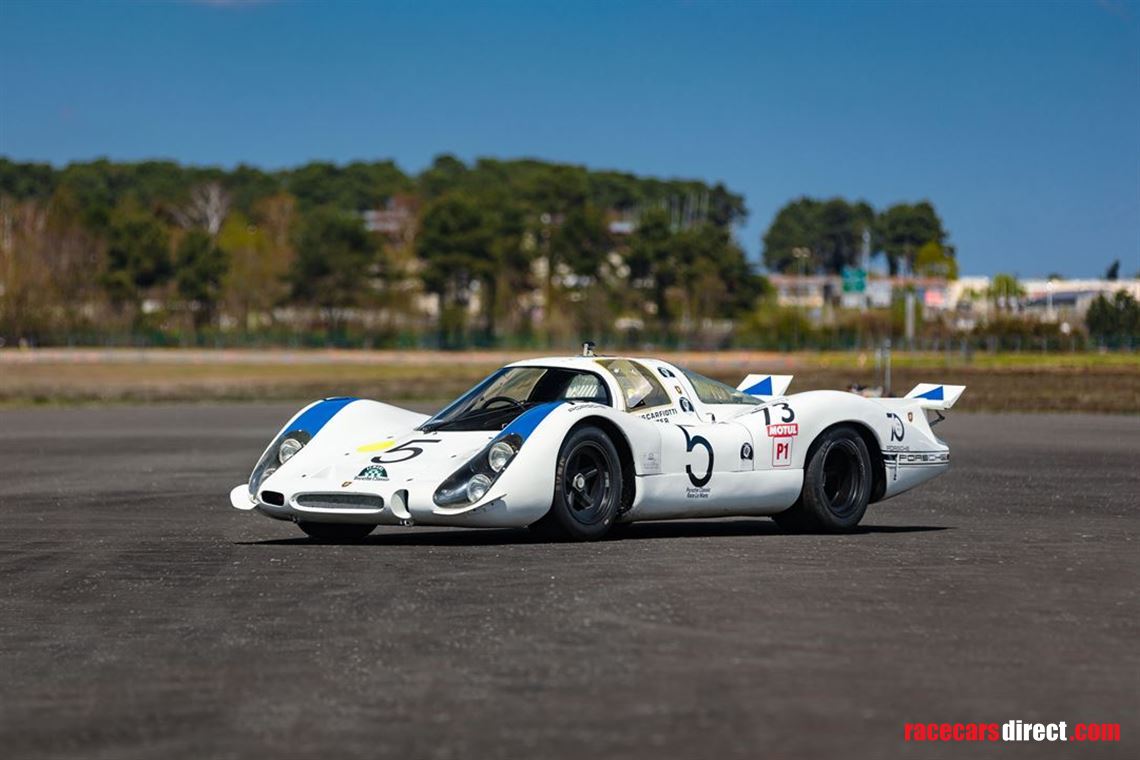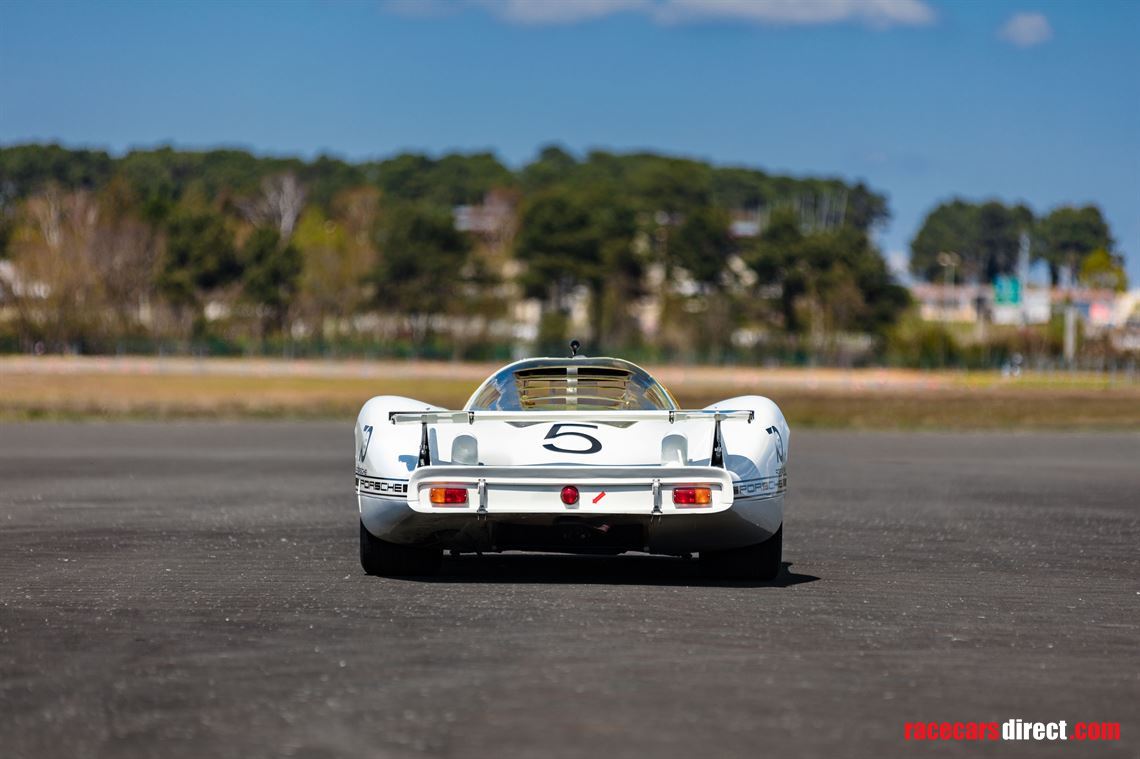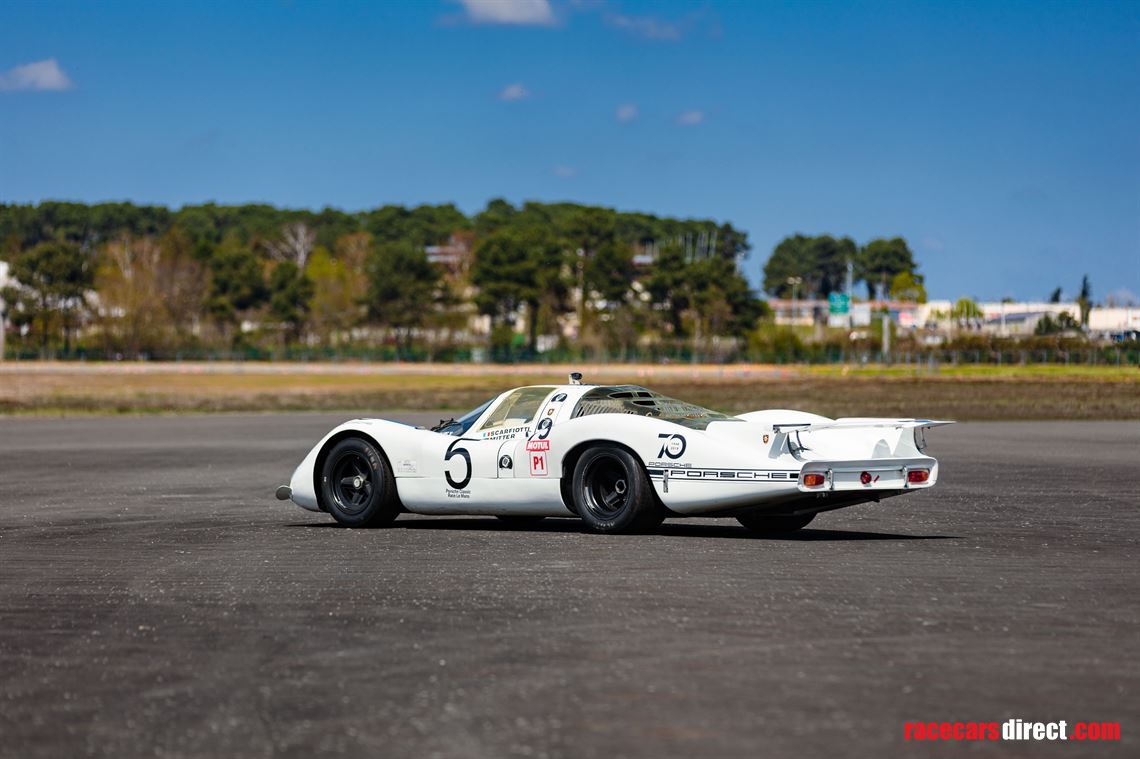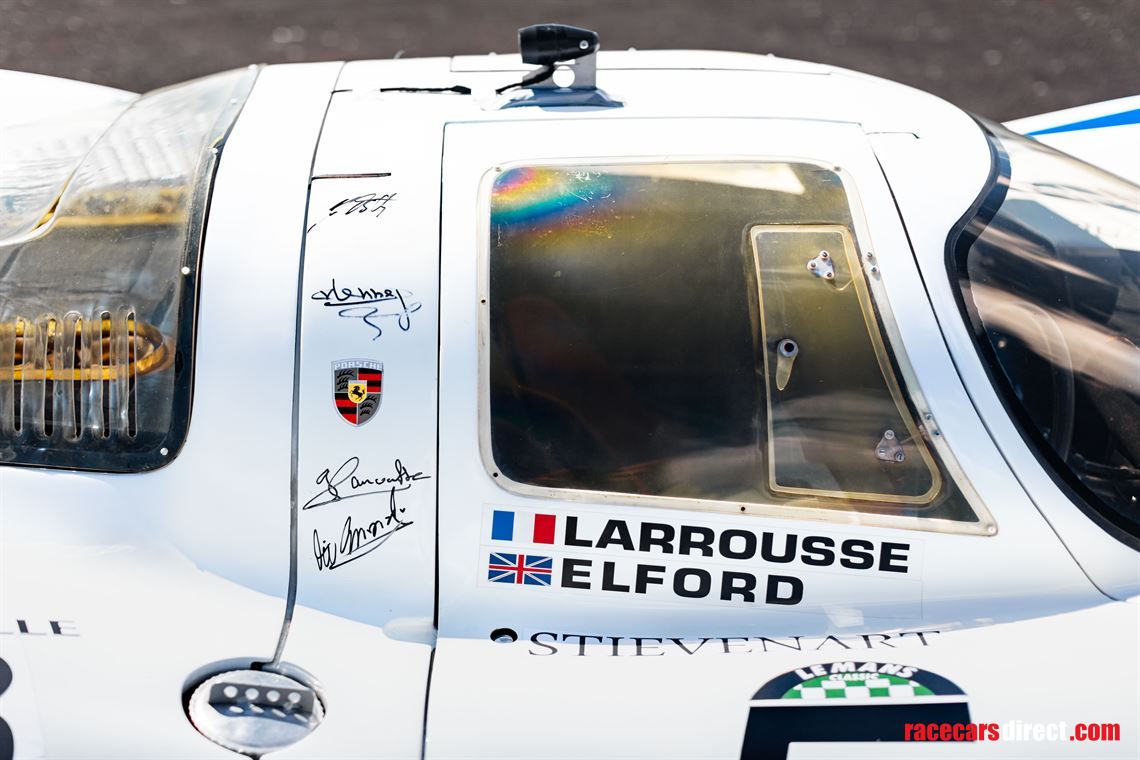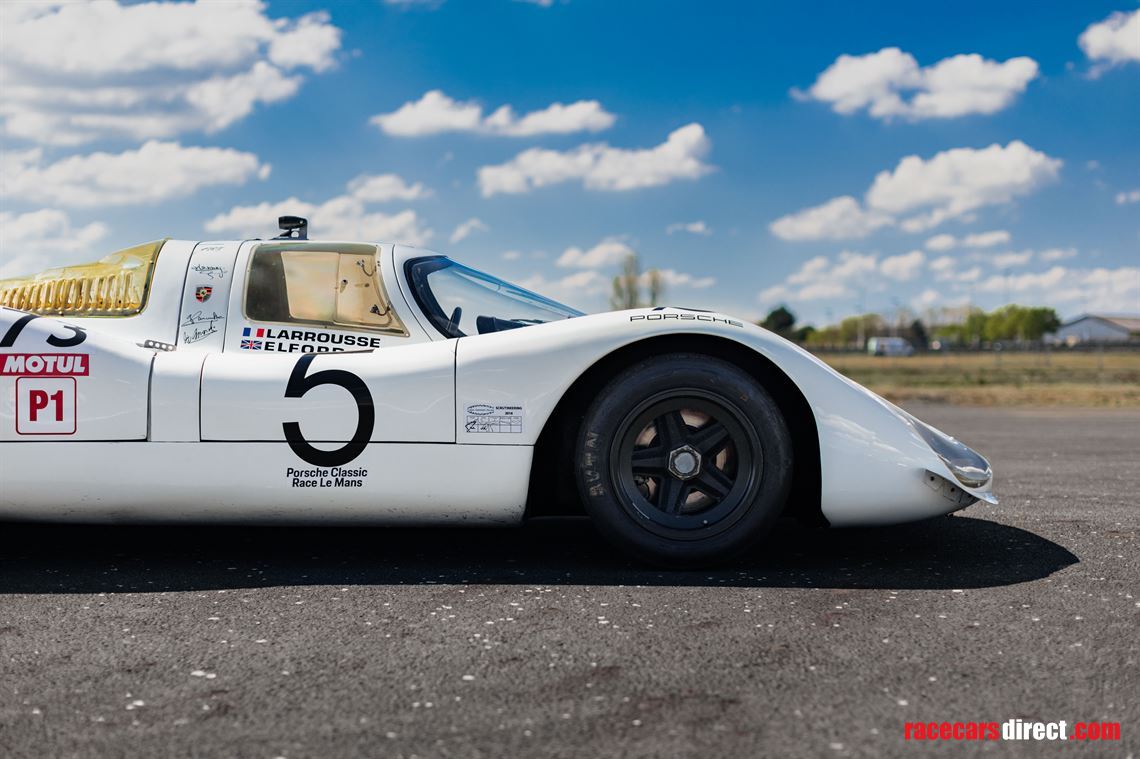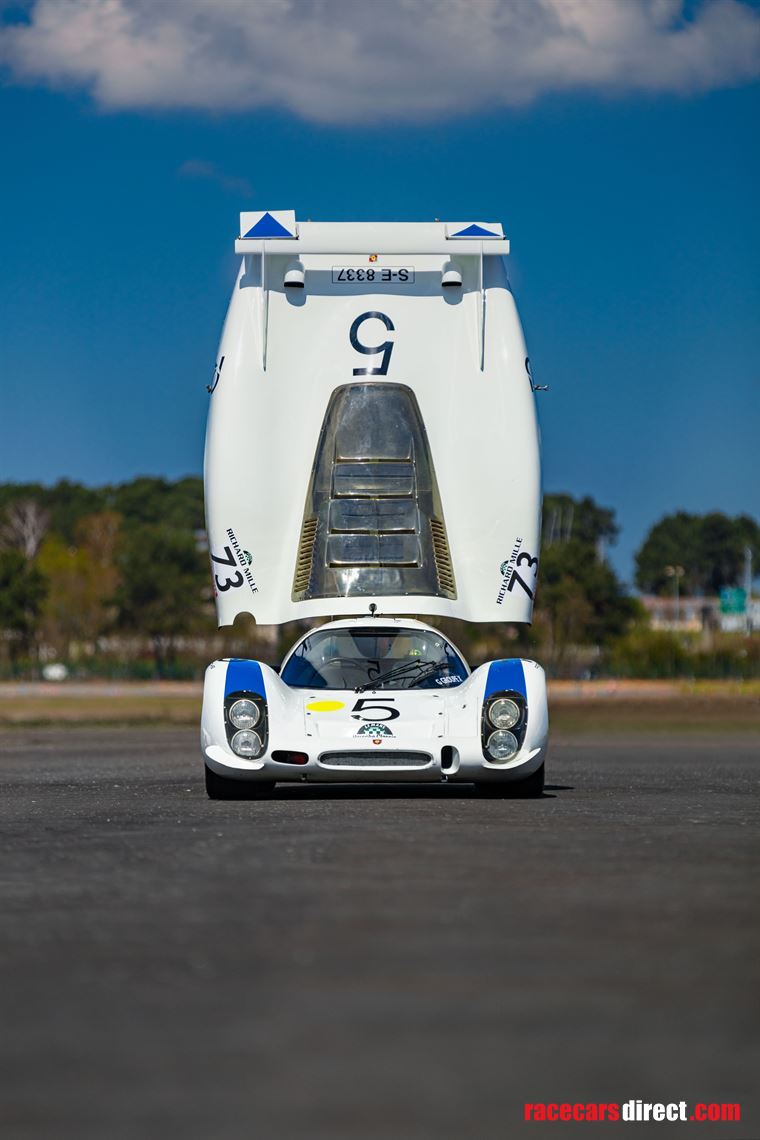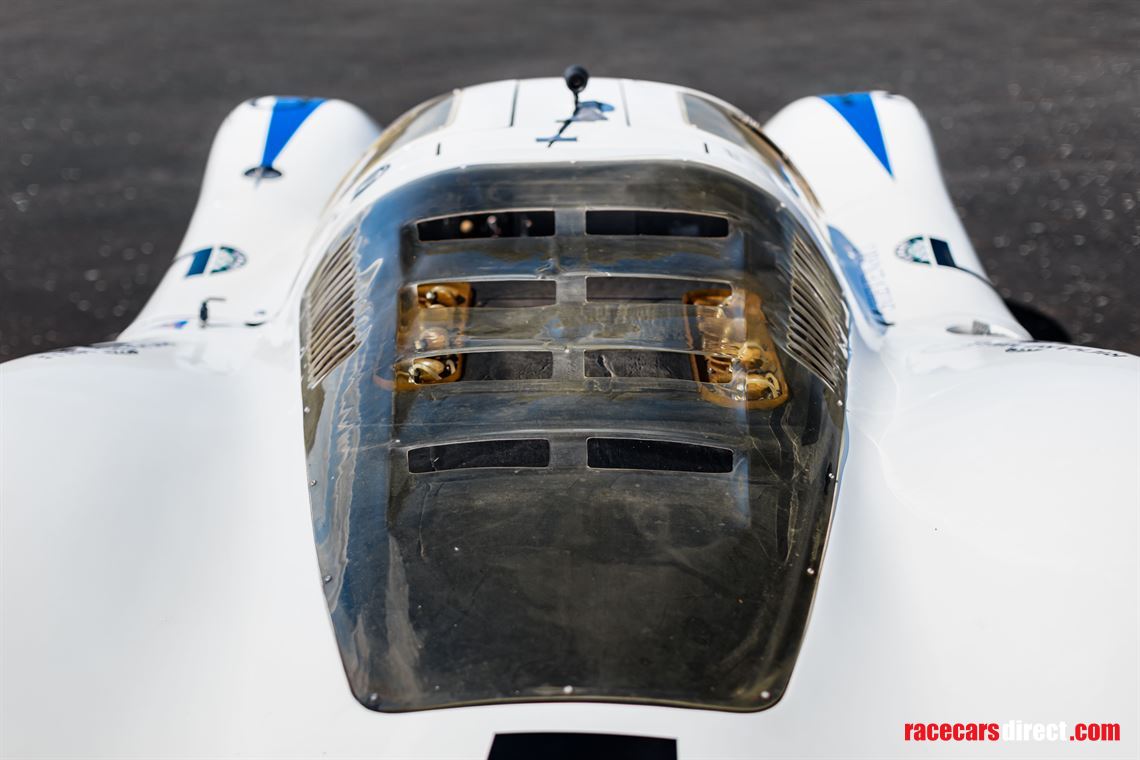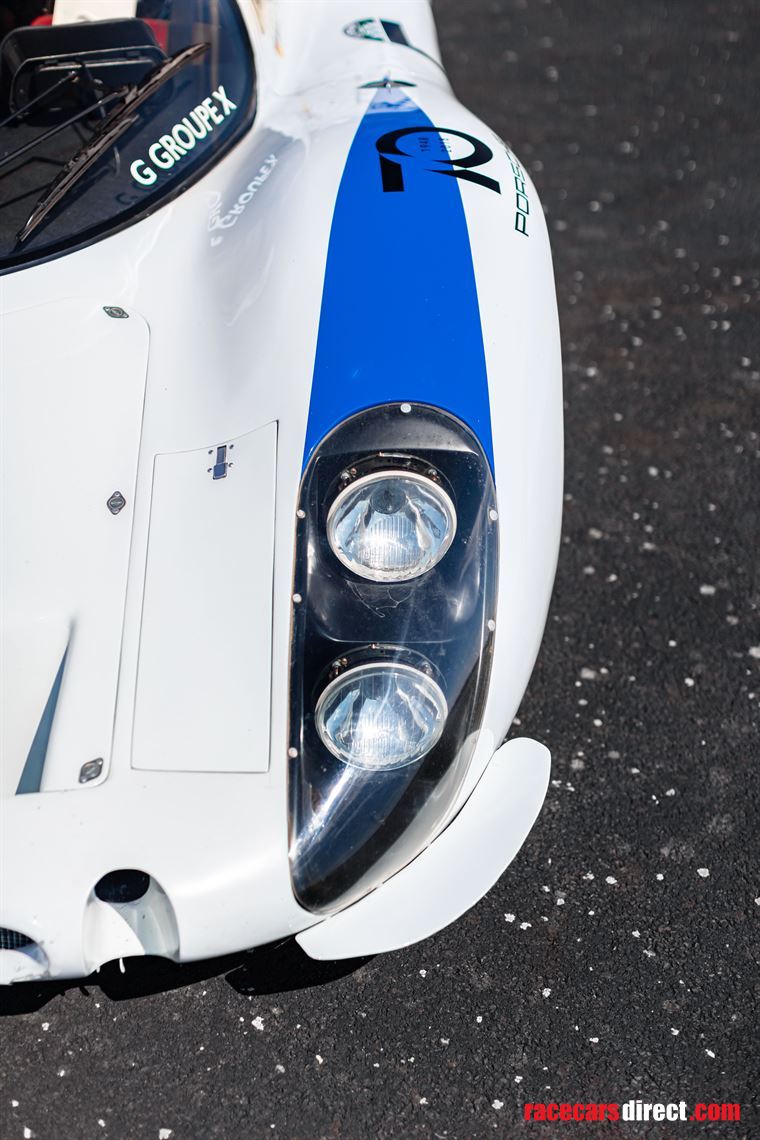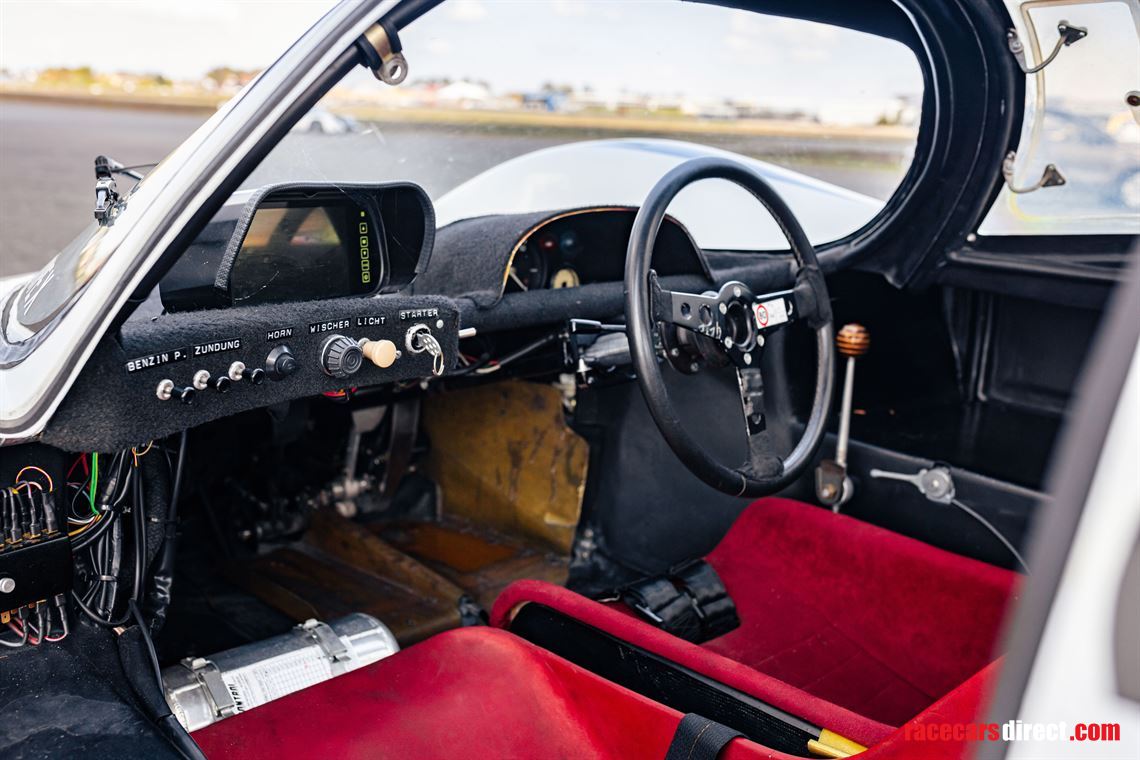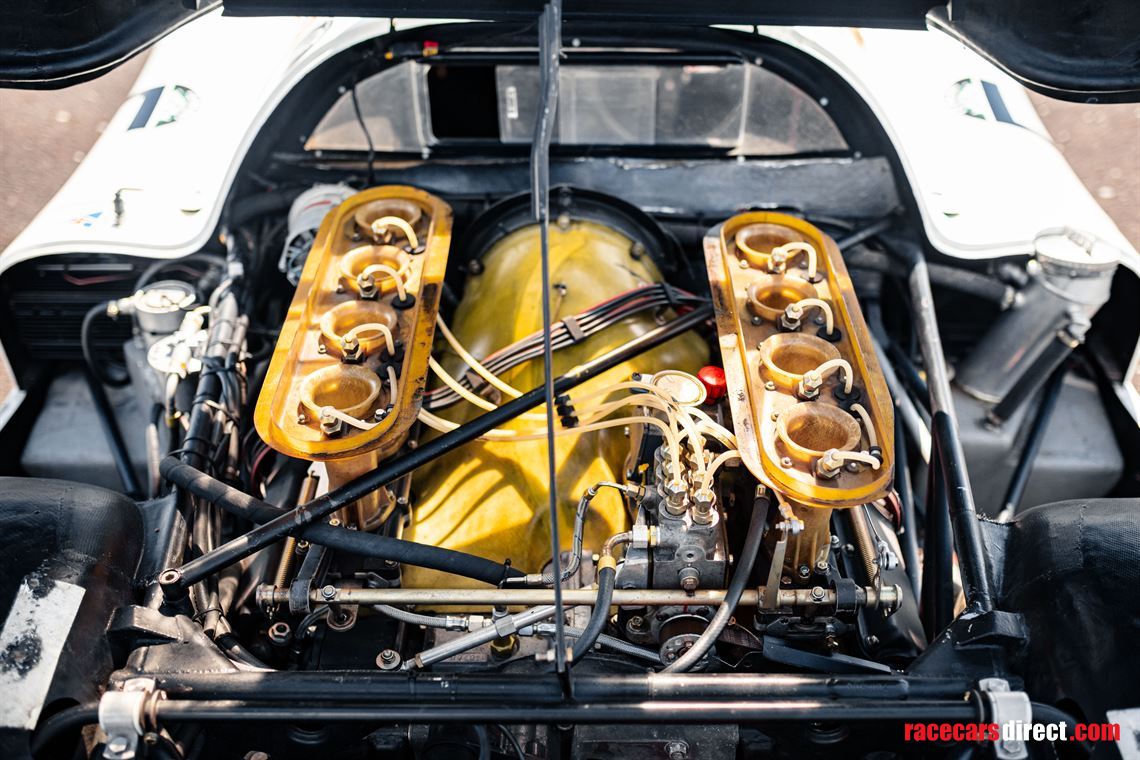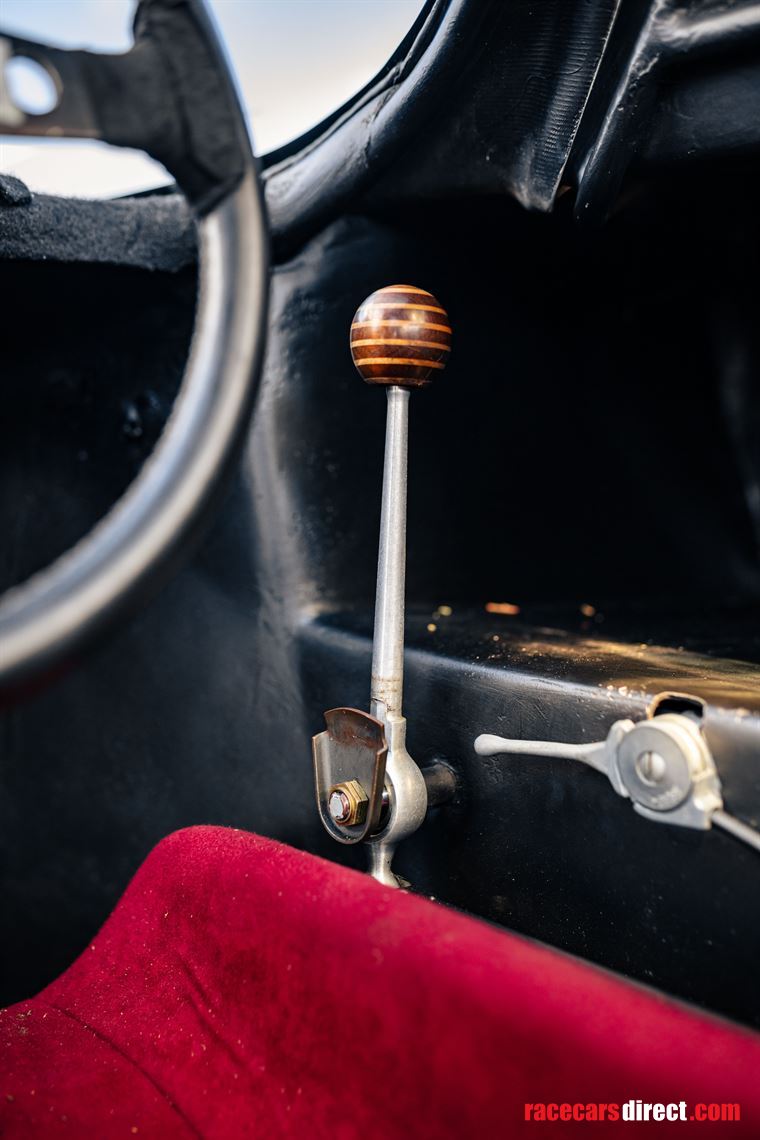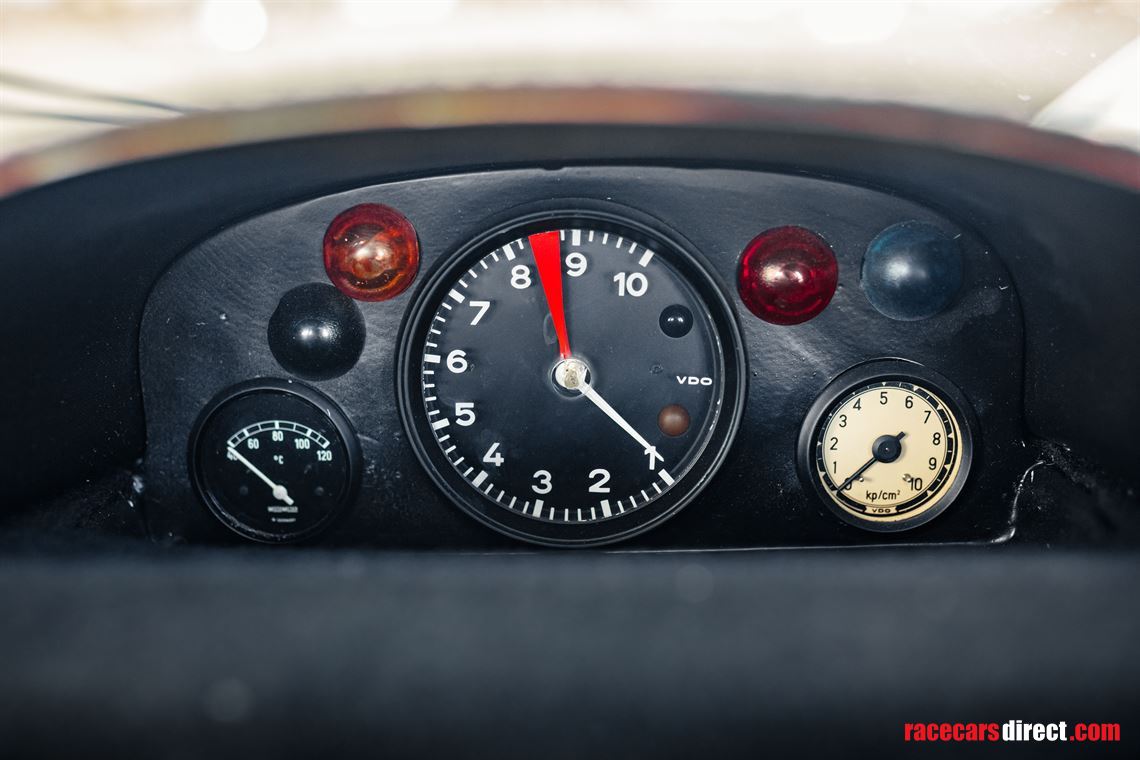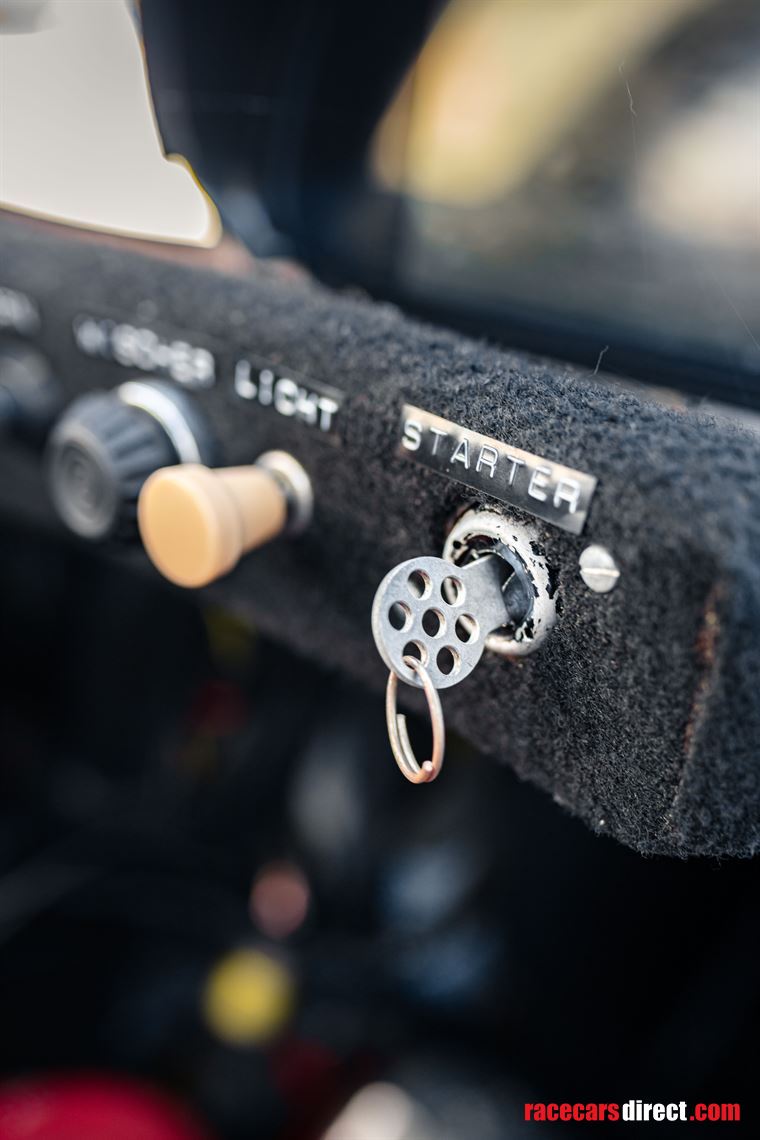Race & Rally Parts

£ POA
1968 Porsche 908 LH - SOLD
This is now SOLD. Search for similar items.
Description:
Porsche 908 LH
Auction estimate: €2,000,000 - €3,000,000.
CHASSIS N° 908-004
ENGINE N° 908/02010
GEARBOX N° 916/018
COMPETITION CAR
WITHOUT A REGISTRATION TITLE
Tailored to enter the most prestigious historic competitions
Factory car and one of the first two 908s entered in the Championship
Took 11 th and 3 rd place in its category at the 1968 Monza 1000 km race
Long-tail configuration and the rarest steel chassis
Owned by Gérard Larrousse for nearly 44 years
Restored by Freisinger Motorsport in 2014, repairs totalling over €700,000
In 1968, the 907 and 908 paved the way to success for Porsche, allowing the brand to secure first place in the grand touring classification of the world championship for manufacturers. However, by a mere three points, victory in the Overall Classification was conceded to Ford. Considering the significantly superior power of the American manufacturer’s GT40, with its 410 horsepower in 1968, this achievement by the small German manufacturer is simply masterful.
Nevertheless, Porsche did not settle for this result and reevaluated its approach by refining and producing various versions of the 908, while also giving birth to the legendary 917, with undeniable success. In 1969, the brand achieved its ultimate goal and claimed the world title in both the Overall Classification and Grand Touring. The Porsche 908 is derived from the 907 but equipped with a new 3.0L engine. This was in response to the necessity of having a more powerful engine to prevail against stronger competition, while still adhering to the FIA regulations. In October 1967, the FIA modified the regulations of the World Championship for Brands. The maximum displacement limit was reduced to 3.0L for the Prototype category and 5.0L for the Sport category.
This restriction favored Porsche with its exceptionally efficient engines, albeit smaller than those of its competitors until then. As a result, starting in 1968, the German brand found itself in a much better position in the Championship. Furthermore, the engineers in Stuttgart had not waited for the official announcement of this change. They had anticipated this restriction and had already begun in 1967 to work on a new, more powerful engine that would be in keeping with the expected change in the rule book.
This engine, known as the Type 908, is an 8-cylinder flat engine with a displacement of 2996 cm3 , producing 320 horsepower from the outset. It was quickly pushed to 335 horsepower for the first race of the Porsche 908 at Monza in April 1968. In its latest iteration, it even reaches up to 370 horsepower. It features a two valves per cylinder configuration with four chain-driven camshafts. The cylinders and cylinder heads are made of aluminum, while the connecting rods and their bolts are made of titanium. The engine block and all the covers are made of magnesium. As a result, this engine, which incorporates a dry sump lubrication system designed specifically for optimal crankshaft lubrication, weighs 178 kg, for a car that weighs between 650 and 700 kg at most, depending on the versions. This new engine allows the long-tail (LH) version of the 908, equipped with movable rear wings, to reach speeds of up to 320 km/h!
However, the 908 LH is not the lightest version, as it is the long version of the 908 coupé. The coupé version, like its predecessors the 906 and 907, was also produced in a short version, known as K (Kurzheck), as well as a spyder version, designated as the 908-01, starting from late 1968. This spyder version underwent extensive modifications, resulting in the evolution to the 908.02, and eventually the ultra-lightweight 908.03, which was an entirely new design except for the engine. The gearbox of the 908 is also entirely new to withstand the power developed by the 3.0L engine of the 908, as the gearbox of the 907 could not handle it. Initially, they considered using the gearbox from the Bergspyder 910 (used in hill climb races), but it was quickly deemed too slow and heavy. It was replaced by a new 5-speed gearbox, known as the Type 916, featuring special oil jets for gear lubrication.
Another novelty on the 908 is that starting from May 1968 at the Nürburgring, the brakes were dimensioned more generously due to the increase in the diameter of the wheel rims from 13 to 15 inches.
The chassis of the 908 also underwent extreme changes over a short but intense period of time. The early models inherited a design quite similar to that of the 907, but at Watkins Glen in July 1968, the factory entered a 908 K with an aluminum tubular chassis instead of steel one used up until then. This change allowed the 908 to shed about twenty kilograms. This lightweight chassis was subsequently adopted for all 908 models starting from chassis number 908-012. Furthermore, towards the end of 1968, these chassis were equipped with a valve that could be filled with compressed air, enabling the detection of any hidden cracks or damage through a simple and foolproof pressure check.
Despite its formidable engine and all these innovations, the Porsche 908, easy winner at the Nürburgring in 1968, did not, however, achieve the expected success in its debut racing year, considering its displacement was still significantly lower than that of the Ford GT40, which remained eligible in the Sport category (due to the minimum requirement of 50 cars built) for that season. To bridge this gap, Porsche began developing the 917 during the course of 1968. It was unveiled in March 1969 at the Geneva Motor Show, featuring a 4.5L flat-12 engine producing 530 horsepower. It was considered the most powerful «production» car ever manufactured by the brand. Added challenge, it was necessary to produce the 25th unit by the end of that month in order to meet the FIA’s requirements for homologation in the Sport category.
Nevertheless, in the interim period between the mid 1968 season and the beginning of the 1969 season, while the 917 was still in the development phase - based on the engine of the 908 and the chassis of the 908.02 - it was indeed the 908, in its long version on fast circuits and in spyder form on slow circuits, that successfully represented Porsche in competition. Moreover, the 908 is viewed as a major milestone in Porsche’s history on its journey to the world title in 1969. Not only did the 908 LH driven by Hans Herrmann and Gérard Larrousse finish 2nd in the 1969 24 Hours of Le Mans, behind the Ford GT40 of Jacky Ickx and Jackie Oliver, while no 917s completed the race, but it also played a significant role in building the brand’s competition legacy. For instance, in 1972, when the 917 was excluded from races due to a new regulation, it was once again the 908 LH that was brought out from retirement. By a stroke of luck, between the withdrawal of a Matra MS660C and an Alfa Romeo T33, it secured a podium finish in the 24 Hours of Le Mans, this time claiming 3rd place.
The Porsche 908 from the magnificent collection we are presenting at auction bears the chassis number 908-004. This car is among the very first models of the series of 31 coupé models (including three prototypes) of the 908 that were manufactured. Among these models, it is one of the 18 coupés in the long-tail (LH) version that were produced, and one of the few still in existence today from the small number that are recorded. As an early production car, this 908-004 features a steel chassis. Only models were built in this long-tail configuration with a steel chassis: this car, 004, and its predecessor, chassis 003.
As shown in period photos, during their first race at Monza, these two cars, #003 and #004, had a rear hood without a wing and movable flaps, featuring only two vertical fins, which were later modified.
Today, our 908-004 remains in the same configuration as the 908-003, displayed at the Porsche Museum in Stuttgart-Zuffenhausen. With a long-tail bodywork that has been slightly modified to accommodate the two movable flaps connected to the rear anti-roll bar and positioned on top of the longitudinal fins of the hood, joined by a fixed wing, this is the typical aerodynamic setup of the 908 LH. In addition to being one of the rarest in terms of its features, the 908-004 stands out from other highly desirable 908s because of its unique history.
This 908 is among the first to have been entered in competition since, together with #003, both cars lined up at the start of the 1968 Monza 1 000 km race. However, it is indeed our car, #004 bearing race number 5, driven by Ludovico Scarfiotti and Gerhard Mitter, finished far ahead of its teammate (19th place). 908-004 took 11th place in the 1968 Monza 1 000 km race and, simultaneously, came 3rd in the Prototype 3.0L category. A month later, in late May 1968, during the Spa 1 000 km race, the 908-004 served as a test car for the British driver Vic Elford, who would go on to win four endurance races with a 908 between 1968 and 1971.
After these achievements, Porsche kept it as a reserve car until the end of 1968, before finally selling it as a non-running car in 1970 to Hans-Dieter Dechent, who, after his racing career, became the manager of the new Martini International Racing Team in the same year. This team would become one of Porsche’s official entries at Le Mans in 1971, alongside John Wyer’s Gulf team. Hans-Dieter Dechent had 908-004 restored to working condition, before handing the car over to its driver Gérard Larrousse in 1971 as payment for his services, and to reward him for his victory with his teammate Vic Elford at the 1971 Nürburgring 1 000 km race in the Porsche 908.03.
Gérard Larrousse, a factory Porsche driver during the brand’s most successful endurance seasons (1969, 1970, and 1971), and a twice winner of the 24 Hours of Le Mans in 1973 and 1974 with Henri Pescarolo in the Matra MS 670 B, jealously kept the car for over 43 years! This illustrious owner, among the greatest names in French motorsport, preserved this 908, keeping it away from prying eyes and circuits, which explains why the car, is today, in such amazing condition.
In 2014, some time before its sale, the car was sent to Germany to the renowned specialist Freisinger Motorsport for restoration and engine and gearbox overhaul. The cost of these operations amounted to a little over €730,000, according to the invoices attached to the file. Finally, at the end of 2014, Gérard Larrousse parted ways with the 908-004, which he had cherished for a good part of his life, selling it to another highly knowledgeable collector of competition Porsches. It then remained in the collection of the latter for a few years before passing into the hands of its current owner, along with other cars from the said collector, forming a remarkable and significant ensemble of Porsche’s competition history.
Following the significant restoration work carried out in 2014, the 908-004 returned to the realm of competition for a few years. Between 2015 and 2018, the car was notably entered in various historic races with different amateur or semi-retired former professional drivers. It participated in the Dix Mille Tours du Castellet in 2015 with Gérard Larrousse. In 2016, it took part in the Classic Endurance Racing I, participating in the Jarama Classic, Spa-Classic, the Grand Prix de l’Âge d’Or, and once again the Dix Mille Tours du Castellet. Not to mention the Le Mans Classic (grid 5), co-piloted by Gijs Van Lennep, the twice winner of the 24 Hours of Le Mans (1971 and 1976) with the Martini Racing team. In 2018, with driver Evens Stievenart behind the wheel, 908-004 even won the Porsche Classic Race as part of the Le Mans Classic, before receiving a penalty that ultimately pushed it down to 11th place, but still getting a special distinction for the fastest lap of the race. Since its last competitive outing in 2018, the 908 has not raced again and requires a revision, although it is currently in running condition following the recent restart for the sale.
Apart from that, this 908, chassis 004, is in very good overall condition today, it has remained in a configuration close to its appearance during the 1968 Monza 1 000 km race and still displays its racing number 5. The connection of the left rear movable flap to the stabilizer bar will simply need to be addressed for the aerodynamic support system to be functional again. It is equipped with a flat-eight engine of type 908, bearing the number 908/02010. Additionally, it also has a gearbox consistent with its original type 916, marked 916/018. It has been fitted with 15-inch wheels, identical to those mounted on the 908s from May 1968 onwards to accommodate larger brakes than initially planned, with aluminum calipers, as is the case with our car.
This 908-004 has also retained many of its original components, such as its door windows and rear plexiglass, its bucket seats with the red suede simply replaced, its steering wheel, wooden gear knob, as well as its upper intake manifolds and other reinforced plastic elements. However, a modern camera has been installed to improve rear visibility. In addition to these distinctive features, this 908 also bears the signatures of the illustrious drivers who have taken the wheel in recent years, including that of Gérard Larrousse, which is particularly special for this car given their shared history.
The car comes fully documented with a file containing many period photos as well as the PTH FIA request made in 2015. You will also find a structural integrity report (crack test) of the parts submitted for this inspection to obtain the aforementioned passport, along with a comprehensive expertise report by Jean-Pierre Cornu, as well as the aforementioned invoices and various archival documents.
In view of this cars uniqueness and taking into account the decisive role of the 908 in Porsche’s competition history, and by extension in the construction of the brand’s legend, this 908-004 is undeniably the centerpiece of the fantastic collection of mythical Porsches offered at auction in this extraordinary event. This is a once in a lifetime opportunity to acquire one of the very first 908s ever produced, with a remarkable history, in its most iconic long-tail version developed for the 24 Hours of Le Mans, of which only a few examples remain. This is the very car from which Ferdinand Piëch’s team was able to design the legendary 917 - the other absolute Holy Grail for a Porsche collector - the car that finally achieved the long-desired victory at the 1970 24 Hours of Le Mans.

